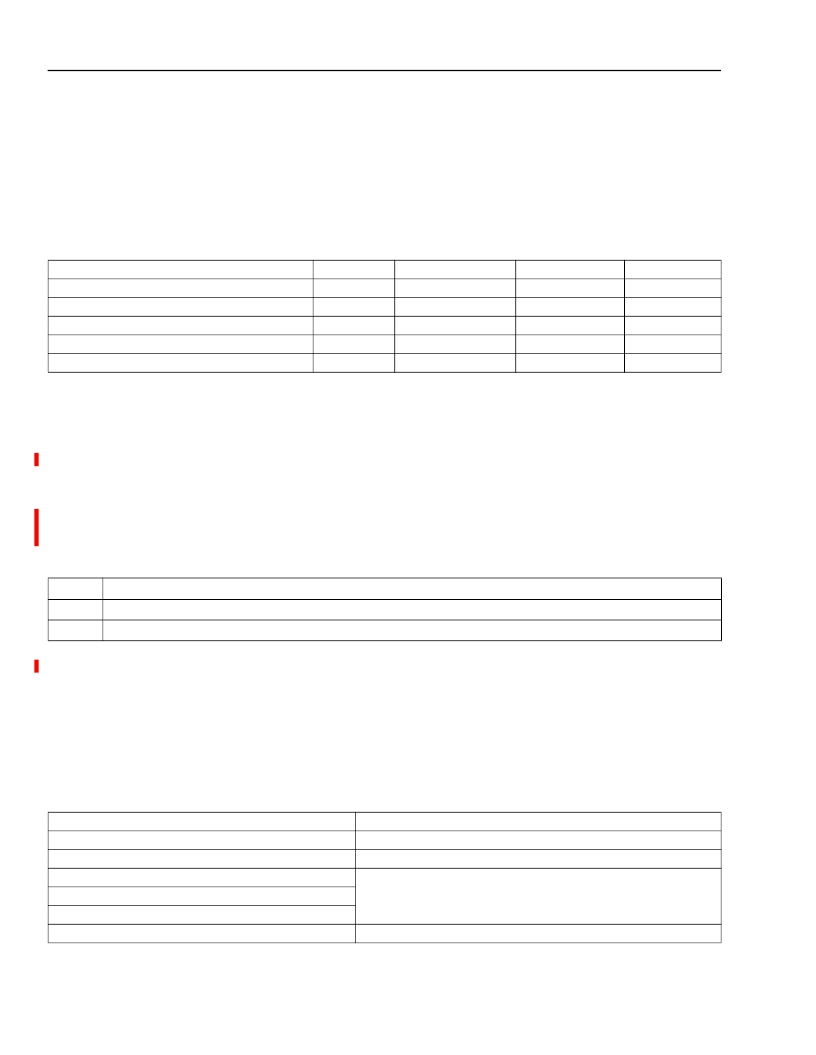- 您現(xiàn)在的位置:買賣IC網(wǎng) > PDF目錄371179 > T8302 T8302 Internet Protocol Telephone Advanced RISC Machine (ARM) Ethernet QoS Using IEEE 802.1q PDF資料下載
參數(shù)資料
| 型號: | T8302 |
| 英文描述: | T8302 Internet Protocol Telephone Advanced RISC Machine (ARM) Ethernet QoS Using IEEE 802.1q |
| 中文描述: | T8302因特網(wǎng)協(xié)議電話高級RISC機(ARM)的以太網(wǎng)使用IEEE 802.1q的服務質(zhì)量 |
| 文件頁數(shù): | 244/248頁 |
| 文件大小: | 7321K |
| 代理商: | T8302 |
第1頁第2頁第3頁第4頁第5頁第6頁第7頁第8頁第9頁第10頁第11頁第12頁第13頁第14頁第15頁第16頁第17頁第18頁第19頁第20頁第21頁第22頁第23頁第24頁第25頁第26頁第27頁第28頁第29頁第30頁第31頁第32頁第33頁第34頁第35頁第36頁第37頁第38頁第39頁第40頁第41頁第42頁第43頁第44頁第45頁第46頁第47頁第48頁第49頁第50頁第51頁第52頁第53頁第54頁第55頁第56頁第57頁第58頁第59頁第60頁第61頁第62頁第63頁第64頁第65頁第66頁第67頁第68頁第69頁第70頁第71頁第72頁第73頁第74頁第75頁第76頁第77頁第78頁第79頁第80頁第81頁第82頁第83頁第84頁第85頁第86頁第87頁第88頁第89頁第90頁第91頁第92頁第93頁第94頁第95頁第96頁第97頁第98頁第99頁第100頁第101頁第102頁第103頁第104頁第105頁第106頁第107頁第108頁第109頁第110頁第111頁第112頁第113頁第114頁第115頁第116頁第117頁第118頁第119頁第120頁第121頁第122頁第123頁第124頁第125頁第126頁第127頁第128頁第129頁第130頁第131頁第132頁第133頁第134頁第135頁第136頁第137頁第138頁第139頁第140頁第141頁第142頁第143頁第144頁第145頁第146頁第147頁第148頁第149頁第150頁第151頁第152頁第153頁第154頁第155頁第156頁第157頁第158頁第159頁第160頁第161頁第162頁第163頁第164頁第165頁第166頁第167頁第168頁第169頁第170頁第171頁第172頁第173頁第174頁第175頁第176頁第177頁第178頁第179頁第180頁第181頁第182頁第183頁第184頁第185頁第186頁第187頁第188頁第189頁第190頁第191頁第192頁第193頁第194頁第195頁第196頁第197頁第198頁第199頁第200頁第201頁第202頁第203頁第204頁第205頁第206頁第207頁第208頁第209頁第210頁第211頁第212頁第213頁第214頁第215頁第216頁第217頁第218頁第219頁第220頁第221頁第222頁第223頁第224頁第225頁第226頁第227頁第228頁第229頁第230頁第231頁第232頁第233頁第234頁第235頁第236頁第237頁第238頁第239頁第240頁第241頁第242頁第243頁當前第244頁第245頁第246頁第247頁第248頁

242
Agere Systems Inc.
T8302 Internet Protocol Telephone
Advanced RISC Machine (
ARM
)
Data Sheet
July 2001
19 Electrical Specifications
19.1 Absolute Maximum Ratings
Stresses in excess of the absolute maximum ratings can cause permanent damage; these are absolute stress rat-
ings only. Functional operation of the device is not implied at these or any other conditions in excess of those given
in the operational sections of this data sheet. Exposure to absolute maximum ratings for extended periods can
adversely affect device reliability.
19.2 Handling Precautions
Although protection circuitry has been designed into this device, proper precautions should be taken to avoid expo-
sure to electrostatic discharge (ESD) during handling and mounting.
Agere
employs a human-body model (HBM)
and a charged-device model (CDM) for ESD-susceptibility testing and protection design evaluation. ESD voltage
thresholds are dependent on the circuit parameters used to define the model.
The following table shows voltage ratings for CDM and HBM.
Note:
In V5 of the T8302, silicon changes were implemented to improve ESD margins to within the limits specified
below.
19.3 Crystal Specifications
19.3.1 System Clock Crystal
The T8302 requires an 11.52 MHz clock source (derived from an oscillator or a crystal) for the system clock source.
If a crystal is used it must be connected between XTAL0 and XTAL1. The crystal specifications are shown below.
Table 210. Absolute Maximum Ratings
Parameter
Symbol
V
DD
—
—
—
—
Min
—
V
SS
Max
3.5
V
DD
5.5
70
125
Unit
V
V
V
°
C
°
C
Supply Voltage
XRTC0, XRTC1, XTAL0, XTAL1, XLO, XHI
Voltage Applied to I/O Pins
Operating Temperature
Storage Temperature
V
DD
–0.3
0
–40
Model
CDM
HBM
Threshold Voltage Rating
250 V to < 500 V
1000 V to < 2000 V
Table 211. System Clock (XTAL0, XTAL1) Specifications
Parameter
Value
11.52 MHz
Frequency.
Oscillation Mode.
Effective Series Resistance.
Load Capacitance.
Shunt Capacitance.
Frequency Tolerance and Stability.
Fundamental, parallel resonance
A discussion of crystal selection for the T8302 may be found
in the application note
Crystal Selection for the T8301/T8302
Chip Set
.
±
50 ppm
相關(guān)PDF資料 |
PDF描述 |
|---|---|
| T8502 | T8502 and T8503 Dual PCM Codecs with Filters |
| T8503 | T8502 and T8503 Dual PCM Codecs with Filters |
| T8531A | T8531A/8532 Multichannel Programmable Codec Chip Set |
| T8531 | T8502 and T8503 Dual PCM Codecs with Filters |
| T8532 | T8502 and T8503 Dual PCM Codecs with Filters |
相關(guān)代理商/技術(shù)參數(shù) |
參數(shù)描述 |
|---|---|
| T8302A | 制造商:MOLEX 制造商全稱:Molex Electronics Ltd. 功能描述:Terminator Die |
| T8302B | 制造商:MOLEX 制造商全稱:Molex Electronics Ltd. 功能描述:Terminator Die |
| T8302F | 制造商:MOLEX 制造商全稱:Molex Electronics Ltd. 功能描述:Terminator Die |
| T8303A | 制造商:MOLEX 制造商全稱:Molex Electronics Ltd. 功能描述:Terminator Die |
| T8303ABNAD | 制造商:Arcolectric 功能描述:1 Pole Miniature push button(with light) |
發(fā)布緊急采購,3分鐘左右您將得到回復。